You do not need a green thumb for these low-maintenance indoor plants!
A lot of people complain that they do not have green thumbs and that it is hard to maintain them in an indoor setting. This is true of some plants, but if you are scared of leafy plants, you can always turn your attention towards cacti and succulents!
The idea with these plants is that a lot of people think that they are easy to care for, and this is the same mistake I made when I started my journey toward becoming a person with green thumbs.
I assumed these plants would be easy to care for, and while they can be one of the easiest plants to have around the home, they are more finicky at first than one would think.
You have to get them established in your home, and only after you have achieved this will they be easy to take care of!
Once you get the hang of them, that’s when you end up with one of those plants that is easy to care for, and they don’t even require that much water!
But until you get to that point, you will have to pay great attention to these plants! And this is why I have decided to share my knowledge on the matter with you!
I had a lot of trials and tribulations with cacti and succulents, and I learned the hard way how different they are and how to care for them!
If you are ready to discover one of the best plants out there that, with a little attention, can become an amazing house plant that you will have for years, you have come to the right place!
Join me as we dive deep into what makes them so interesting, what the differences between them are, and which I believe are the best types of cacti and succulents for your home!
What do you know about succulents and cacti? What makes them so appealing to you? Have you ever had issues keeping them alive?
Share your answers, and let me know what other questions you want me to answer in the comments!
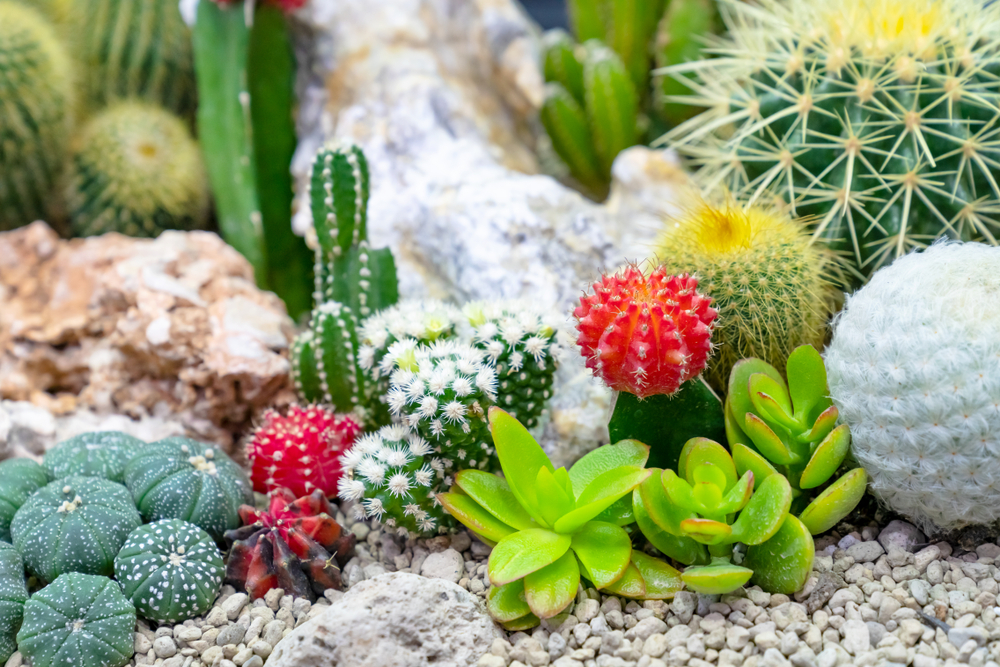
Cacti vs Succulents
Cacti and succulents are similar in the sense that they are some of the plants that have adapted to arid environments, and they can end up living even in deserts.
The fun fact about these plants that many people do not know is that cacti are also succulents!
However, not all succulents are cacti! So when you refer to succulents as a type of cacti, the truth is that you should be referring to them the other way around!
Succulents are known for how fleshy their stems, leaves, and roots are, which is what helps them survive droughts; they store their water in these fleshy parts.
On the other hand, cacti are a group of succulents that have specific features that make us easily recognize them: the spikes and areoles that are distinctive to the cacti subtype, along with the globe or cylinder shape that these plants are known for!
Despite these physical differences, they are both popular plants for both indoor and outdoor gardens since people suspect that they do not need that much water and that they are easy to care for.
While this is true, these plants still have particular things that need to be taken care of for them to be able to thrive properly, and a lot of us have probably discovered that when we managed to kill one of them.
However, once you get their peculiarities in order, they become unique-looking and low-maintenance plants to have around.
Keep on reading to discover the types of succulents and cacti out there and what requirements you need to be mindful of in order to make sure they thrive before we get into my recommendations!
Types of cacti
Some of the most popular types of cacti have specific shapes, and they get their names from there. It may be hard to recognize some of them when they are not in the specific globe or cylindrical shapes that we have gotten used to seeing them.
In reality, this perennial plant has as many as 2,000 species, which are also spread over 139 genera.
They are mostly native to North and South America, with a couple of types of them originating from the Old World, which have occurred in Madagascar, East Africa, and Sri Lanka.
There are some types of cacti that originate and live in subtropical and tropical climates, which are more humid, but most of them have adapted and live in dry areas!
The easiest way to recognize cacti is because they have a thick body, sometimes even woody in texture, along with specific structures. The areoles are the easiest way to spot a cactus since they are those small areas that hold the spines and hairs of the plant.
Another indicator is if the plant has spines or bristles that are barbed.
Sometimes these areoles end up growing outward, like branches, which can then host flowers and more branches. In some cacti species, they may even have leaves!
What differentiates cacti from succulents is that they only store water in the stem, and the rest of the succulents also store water in their leaves!
Types of succulents
As we have mentioned earlier, succulents store their water in their leaves and bodies, even their roots. The plants have adapted in such a way always to have a water supply close to them.
Compared to cacti, succulents can be found on all continents (with the exception of Antarctica), and they have more than 60 species out there.
The part of the world that hosts more than a third of all the species in the world is South Africa, due to the climate there, forced a lot of the plants to adapt to the arid climate.
One of the most common plants that everyone knows but is surprised to find out it is a succulent is the Aloe Vera plant!
The fleshy inside of their leaves has been used in medical and cosmetic treatments for years, and it is one of the most commonly used plant ingredients when it comes to treating inflammation and burns.
What do you know about the indoor care of these plants? Let’s take a look at cacti and succulent care!
Indoor cacti care
When you plant to care for cacti indoors, know that despite their reputation of being easy to care for plants, some species of cacti end up being tough contenders since they are a bit more finicky.
The plants also need time to adapt to their environment, and they are unique beauties once they are comfortable.
Forest and desert cacti make for some of the most amazing windowsill statement pieces or any brightly lit room in your home.
They are great to add around the house, as they will immediately bring some color and personality to any space.
Despite this, there are some main requirements in their care process that you need to keep in mind.
When I first had a cactus, I thought it would be a walk in the park, but since I did not know some of these care requirements, I ended up overwatering my plant, and it did not live long in my room.
Thus, know that cacti need to be placed in a room where they will get plenty of light, so avoid placing them in spots where they will not be getting any light.
They also need to have a certain type of draining soil so that their roots do not end up always sitting in water.
Be careful how much you water them since they can easily be killed when overwatered, and keep it light with the pruning. Let’s get into some specifics!
Cacti light
I mentioned already how they need to be placed in a bright room, but cacti need a lot of light. Depending on the type of cacti, you do not need to keep them in direct sunlight because they are going to burn.
Other species of cacti need to get anywhere between four and six hours of bright sunlight! This is why you need to be careful about which type of cactus you buy and what their individual needs are so that you do not end up accidentally curbing their lives early.
The best practice I found to work great when it comes to having a cactus is to place it close to a sunny window or even on the window sill. Make sure that the spot it is in gets filtered light in the hot months so that you do not burn your cacti.
In the winter months, you should move them to a direct light source, with west- and south-facing windows being the best choices.
Cacti water & soil
When it comes to watering patterns, cacti are different depending on the season, and you cannot just stick to the same type of watering schedule.
Much like how you need to move them depending on the season and how much light and sun they can get, the same can be done when you have to waste them in different seasons.
In spring and summer, cacti are known to be growing more, and this is also the period when you may be lucky enough to see them blooming!
You do not have to water them that often, but if you stick to a watering schedule of every 10 days, you can strike gold. Make sure the water can drain thoroughly between waterings.
In the winter, this is when the plant enters its dormant state, going into a rest period. They do not need as much water in this period, so you can water them once every four weeks, with some desert species of cacti being able to wait even six weeks in winter!
Make sure that the soil is dry to the touch even in between waterings in the summer, and that in winter it stays mostly dry!
Speaking of soil, the best type of soil for cacti is a fast-draining mix that has been formulated specifically for cacti.
While you can grow them in normal soil (forest cacti can thrive in this environment as long as it drains well), the best type of one is going to be one that has been amended with pebbles, perlite, and sand so that it remains aerated and has increased draining properties.
This potting mix has been a lifesaver since I started to look into what my cacti need in terms of soil. It is a balanced blend with an appropriate pH level and amazing drainage.
Cacti temperature
While we know that cacti can live in drought-prone areas, they are not going to thrive if you leave them in direct sunlight for the whole day at 100 degrees!
There are some temperatures at which you can try to keep them so that, depending on the season, they are not going to die.
The best temperature for the winter months, since the plant is resting, is going to be around 55 degrees Fahrenheit. For the summer months, we are going to be looking at temperatures between 70 and 80 degrees Fahrenheit.
Keep in mind that while cacti in their natural habitat can end up faring in low temperatures of 35 degrees Fahrenheit on chilly desert nights, we are talking about indoor plants.
Do not make the mistake I made and assume that the plant is hardy and strong. They are indoor plants, and they are not used to these types of dips in temperatures, so in the winter, make sure it is not facing any winter drafts.
Humidity-wise, as long as your home is average when it comes to humidity, your cacti will be thriving. If you have chosen to have forest cacti, then you should keep a closer eye on your plant.
They like more humid environments, which means that if you see them wilting slightly, you should pick up the habit of misting them from time to time.
Indoor succulent care
Turning our attention to succulents, know that while some of them can thrive indoors, some species of succulents are going to have a hard time if you bring them indoors.
If you have had a succulent that has died on your windowsill, it may have been that you have gotten a species that needs constant light and sun and they did badly inside the home.
However, if you prefer to have succulents rather than cacti inside the home, there are some species that prefer low light and even shade. Knowing what to look for is going to make a ton of difference when it comes to your success with indoor succulents.
A good rule of thumb is to make sure you avoid buying those that come in bright colors; it can be tempting to get the purple, red, or orange succulents, trust me, but they rarely, if ever, do well indoors. They require a lot of light and direct sunlight in most cases, so keeping them inside is going to be a challenge.
The best ones to go for are the fully green ones, like the Gasteria and Haworthia varieties! Now let’s take a look at some particularities succulents have that you need to be careful of!
Succulent light
We have already discussed that some types of succulents are going to need constant light, but what about the species that thrive indoors?
When compared with cacti, succulents will need a lot more light.
If you keep them outside on the porch or inside on a balcony or a sunroom, they will do well with about 6 hours of bright but indirect sunlight each day.
If you plan to keep them exclusively indoors, then you will need to make sure that you have a window that gets light all day long.
You need to have a bright area in your home or office and place your succulent on that windowsill.
It does not have to be direct light, but it needs to be an area that is going to be bright and get a lot of light. If your home is not oriented towards the light, you will have a hard time keeping your succulent happy.
Succulent water
Despite what many think, the hardest thing to get right when it comes to succulents is their watering schedule.
It took me a couple of tries before I managed to get it right, so if you want a dedicated post on this topic specifically, do let me know in the comments!
Otherwise, the big deal with watering succulents is that they need a surprising amount of water for a plant that is known to thrive in drought.
Since it is inside, they are going to need to be watered more than your cacti, but they do not need to be watered as much as other indoor plants you may have.
In the wild, succulents have a vast system of roots, and as plants, they like to have their roots soaked with water, only to have the soil drain out fast.
You need to make sure that the soil is going to be dry in between waterings, and you can water it after the soil has been dry for a couple of days.
You can keep a succulent alive by just lightly spraying it, but if you want a succulent that is going to thrive and not die, you need to follow the soak-and-dry method while making sure that the plant does have time to dry.
Never water indoor succulents on a daily schedule! This is the fastest way to write their sentence.
Much like cacti, they do have a dormant period in the cooler months. They will not be actively growing, therefore they will not need as much water.
Succulent storage
A lot of people make the mistake of getting succulents in glass containers since they like to have access to more light.
However, glass containers are not good for succulents since they can end up making the soil soggy, and most of the time, there are no draining solutions for these types of containers.
What’s more, glass pots end up suffocating the plant since glass is not breathable, and the roots need to be aerated and breathed well for them to be healthy.
If you are a first-time succulent parent, my recommendation is to stay away from glass, at least until you get a good hang of succulent care and are a pro at the watering schedule!
The best posts for succulents are those made from glazed ceramic or terracotta.
We have made the switch to these ones from Amazon, and they have served our plants in a great way! Paired with a special type of soil, this combination has made our plants happier than ever!
Now that we know most about these plants, let’s take a look at some of the most beloved and easy-to-care-for cacti and succulents for your home!
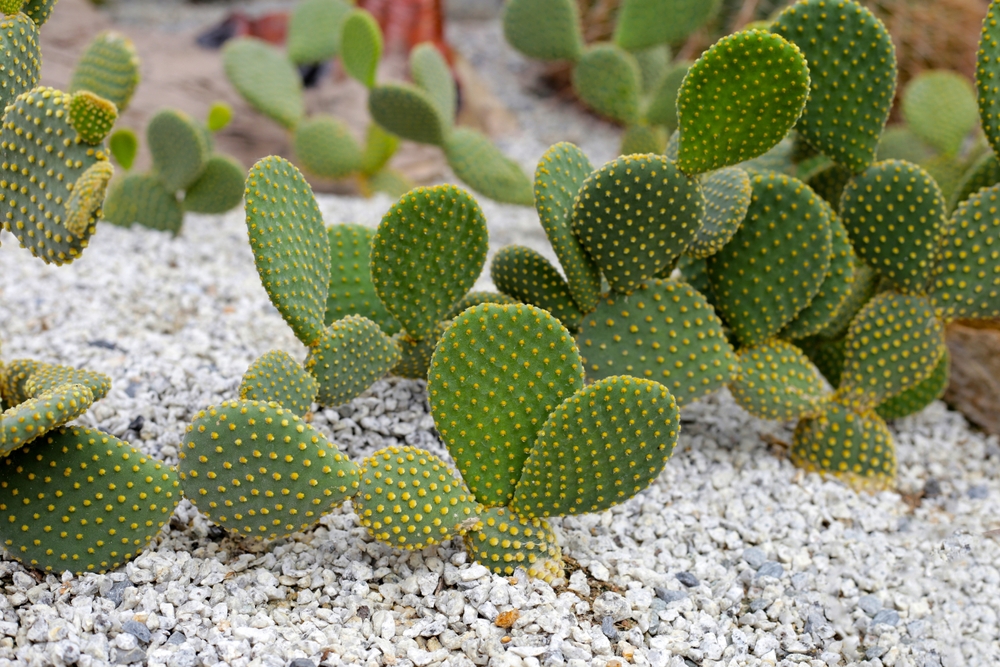
1. Bunny Ears Cactus (Opuntia microdasys)
- Light requirements: Direct light, but needs to be reduced in winter.
- Watering needs: Regular cacti schedule during the first year you have it, then reduce it once the plant is established.
- Soil requirements: Well-draining, on the sandy side.
- Is it safe for pets? It is known to be non-toxic for cats and dogs.
Also known as polka-dot cactus or angel’s wings cactus, this is one of the most commonly known and common types in the Southwest.
It is pretty easy to recognize them, and they are one prickly pear, so you need to be careful around them.
They are now one of the species of cacti that love light, and they do not need to be watered too much.
Know that this variety can grow up to several feet tall and as wide as 6 feet, so make sure that indoors you keep them in a small or medium pot so that it does not spread around.
2. Blue Hens and Chicks (Echeveria glauca)
- Light requirements: Loves bright light.
- Watering needs: Light watering requirements.
- Soil requirements: Well-draining.
- Is it safe for pets? It is known to be non-toxic for cats and dogs.
This succulent is one of the best-known ones, and it is probably what comes to mind when you think about this type of plant.
They are one of the species that you can also keep outside on an open balcony or patio, but keep in mind that they will need to be brought back inside in the winter.
Due to their name, this succulent can be confused with hands and chicks (Sempervivum tectorum), which is another type of perennial plant that resembles a succulent but is a species of houseleek.
The blue hens and chicks have thick and wide leaves, along with a more blue-green color, so be careful when you shop!
This plant will thrive if you find it a bright spot and will love being in full sun, but as always, make sure you do not overwater it.
3. Star Cactus (Astrophytum asteria)
- Light requirements: Full sun to light shade.
- Watering needs: Light watering needs.
- Soil requirements: Well-draining.
- Is it safe for pets? It is known to be non-toxic for cats and dogs.
Also known under the name Sand Dollar Cactus, it is easy to see why this species has gotten these names.
You can easily identify them if you look at them from a bird’s-eye view, and they will resemble both a sand dollar and a star.
This is one of the cacti species that loves to be in direct sunlight, with a requirement of 8 to 10 hours in order to have a happy plant on your hands.
A sunny windowsill is a great option for this cacti, but make sure you keep an eye on its soil.
You should not overwater it, and they are finicky with water. Thus, it is easier to only water it when the soil is really dry!
4. Burro’s Tail (Sedum morganianum)
- Light requirements: Loves bright sunlight.
- Watering needs: Low watering needs.
- Soil requirements: Well draining, sandy, and acidic.
- Is it safe for pets? It is known to be non-toxic for cats and dogs.
With a unique appearance, this is one of the most popular succulents when it comes to having a houseplant!
It makes for a great hanging plant, and with its long tendrils that produce beautiful purple-red star-shaped flowers, it can brighten any room immediately!
The braided tail-looking branch appearance of this succulent is its selling point, but you also need to be aware that it can grow several feet long, so you need to have ample space for it.
A hanging basket would be the best choice for this one, while also making sure it has space to drain.
Burro’s Tail only blooms in summer.
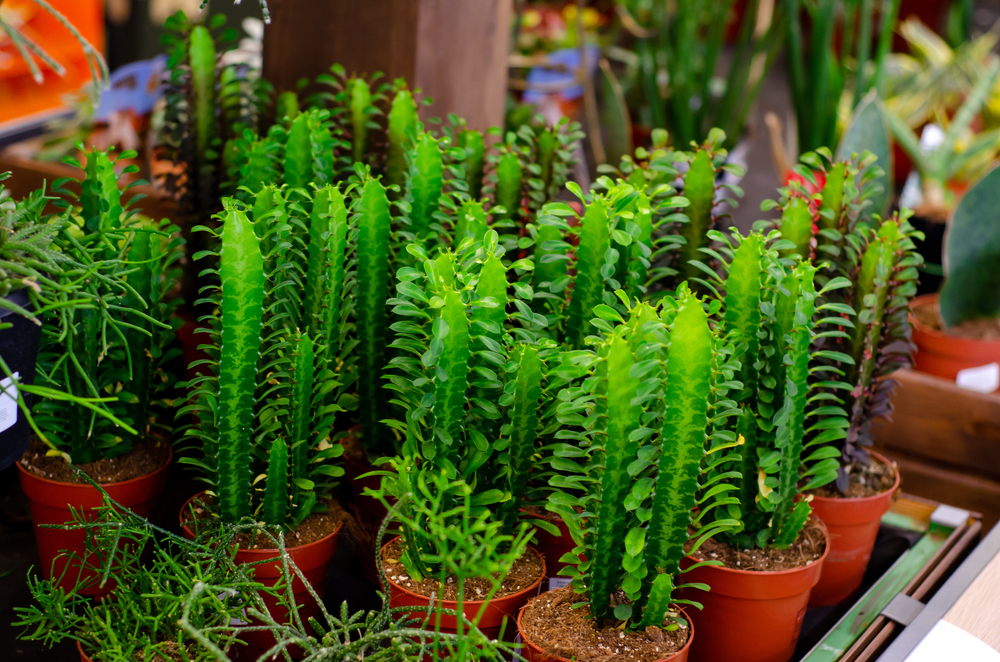
5. African Milk Tree (Euphorbia trigona)
- Light requirements: Requires lots of direct sunlight.
- Watering needs: Light watering needs.
- Soil requirements: Non-fussy, will thrive in various soil types.
- Is it safe for pets? It is known to be toxic to dogs and cats.
We have talked about striking succulents and cacti, but this one can easily turn heads with its unique appearance. The African milk tree is a unique-looking succulent that has a property that has long been associated with good luck and friendship.
The plant gives off a white, Emily substance that can end up being irritating to the skin, but not to anyone. So it would be a great gift for friends and loved ones who you know are not prone to skin issues and thus can handle this beauty!
6. Moon Cactus (Gymnocalycium mihanovichii)
- Light requirements: Full sun to partial shade.
- Watering needs: Light watering needs.
- Soil requirements: Mixed soil that is well-draining.
- Is it safe for pets? It is known to be non-toxic for cats and dogs.
This type of cactus is most commonly seen at the local garden centers, so you are probably used to seeing it, but they also make for amazing houseplants. They are also very popular with cacti lovers because they are unique and colorful.
The moon cactus gets its name and shape from being two cacti grafted together instead of the normal one-cacti situation we are used to.
They generally come in yellow, red, and orange, but there have been variants that look more like pink or are even stripped or dual colors due to the way they grow.
They are fairly easy to grow, with not-so-specific light needs and light-watering ones.
7. Feather Cactus (Mammillaria plumosa)
- Light requirements: Needs a minimum of 6 hours of sunlight daily.
- Watering needs: Dry soil required.
- Soil requirements: Well-draining.
- Is it safe for pets? It is known to be non-toxic for cats and dogs.
This cactus attracts people due to the feather-like plume that grows on top of it, which gives it its fluffy and soft appearance. However, you need to be careful with these cacti, as the fluffy exterior shields the sharp spikes underneath.
The feather cactus is perfect for indoor growing, and it is great for people who are just starting out growing cacti, since as long as you give it plenty of sunlight and water it after a schedule, it will grow happily.
The best watering method is to use the soak and dry method we mentioned before; instead of always watering it, you soak the soil once and then wait for it to dry out, making sure the plant is not sitting in a puddle!
If you are worried that you will not be able to upkeep a cactus because you do not know whether or not they are watered enough, do not worry! There are many houseplants that are water-loving, and some of them are virtually impossible to kill by overwatering. If you are curious about these plants, this article’s for you: 9 Beautiful Indoor Plants That Can’t Be Drowned.

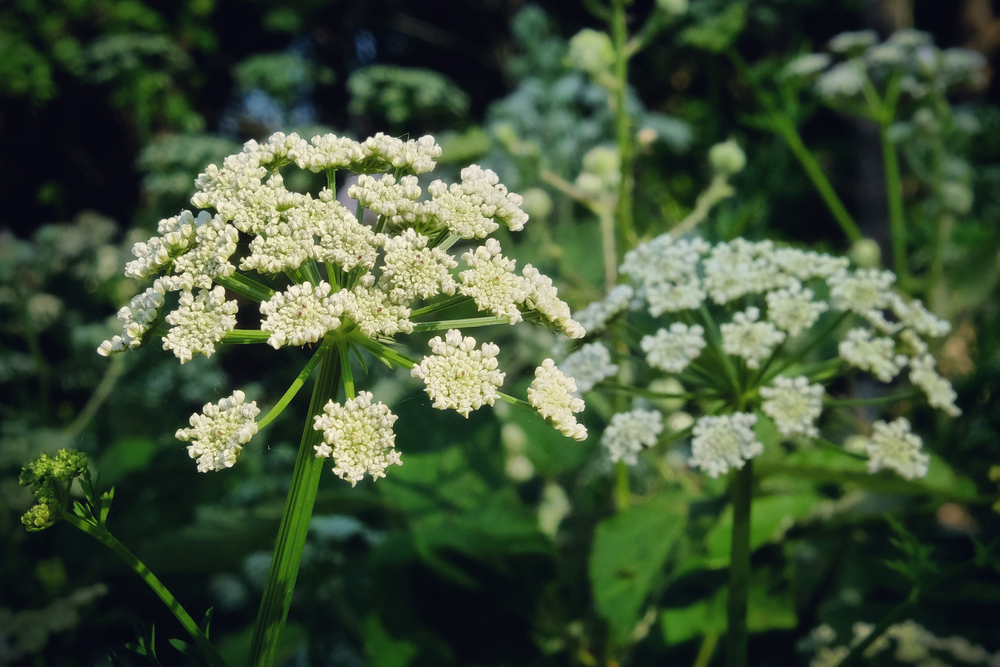
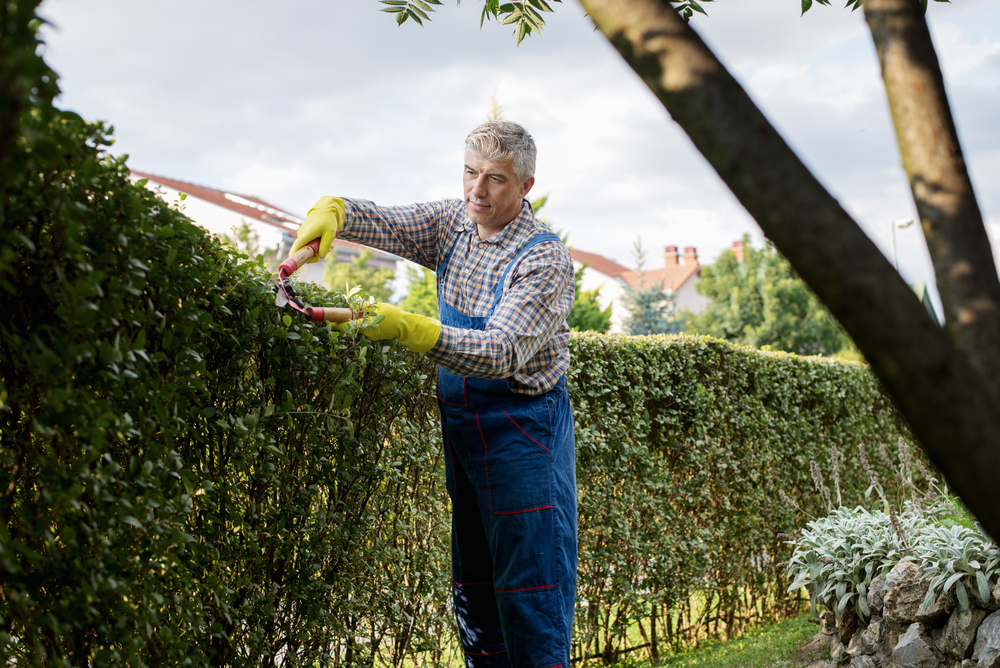
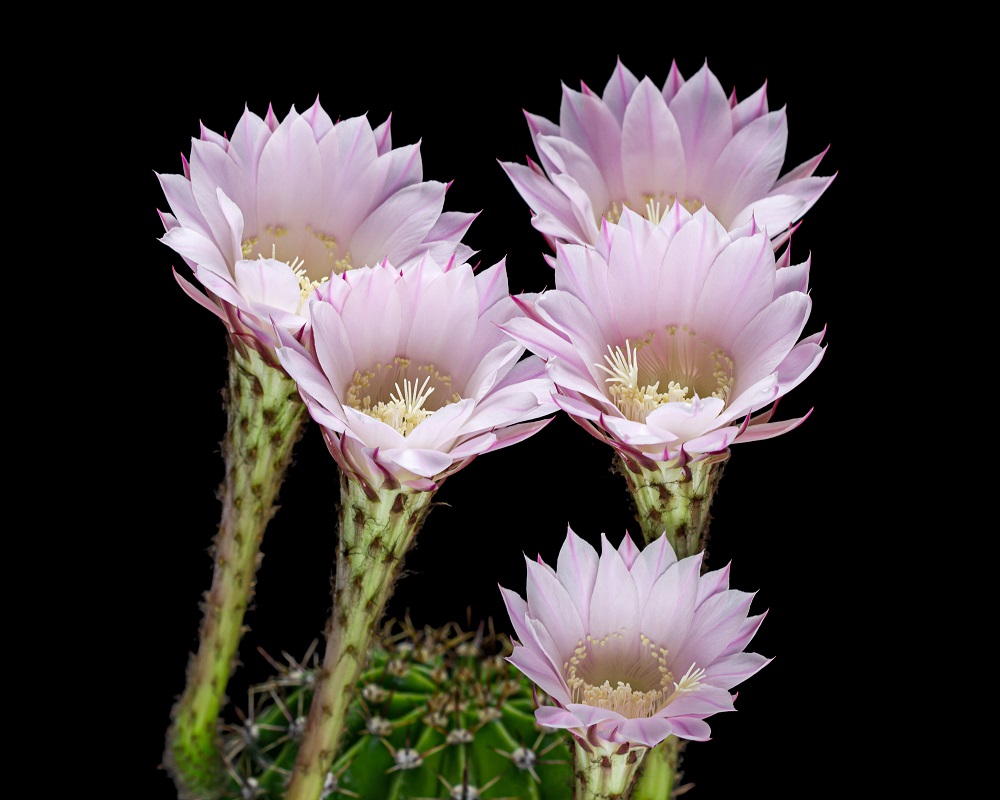
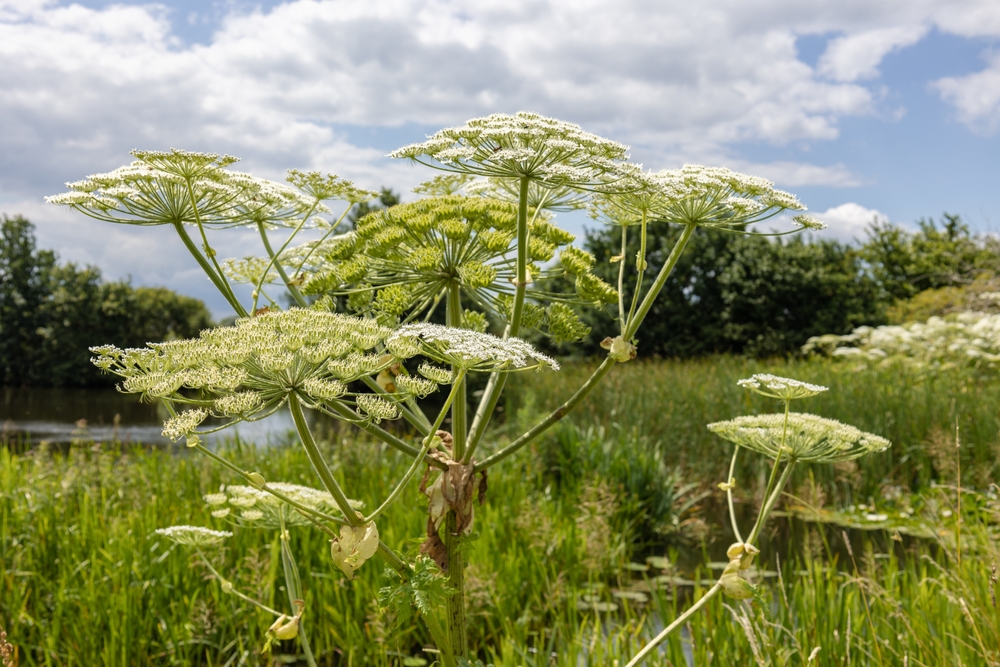

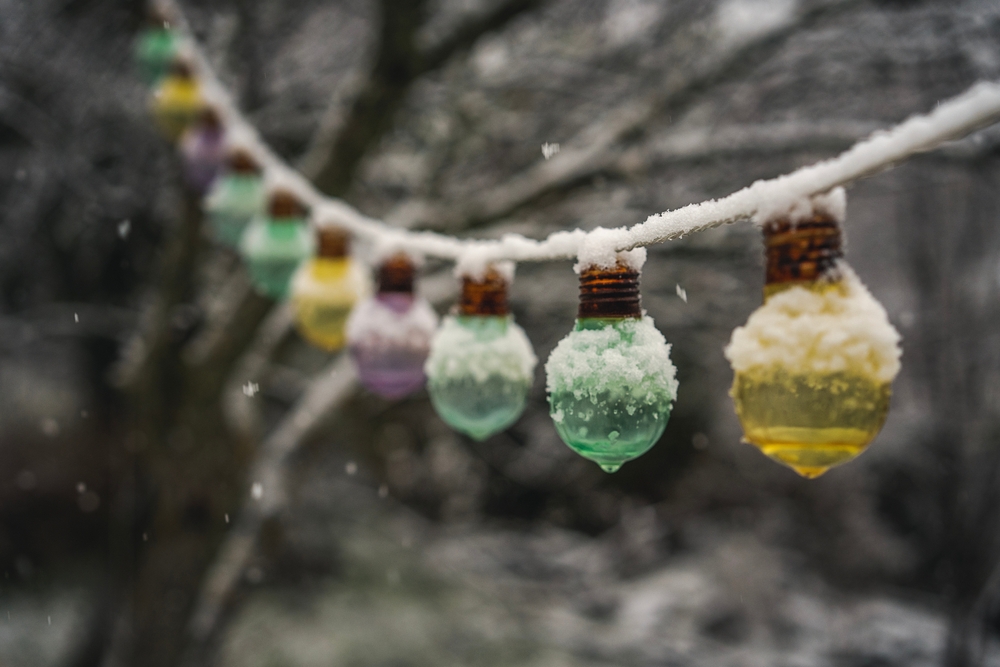

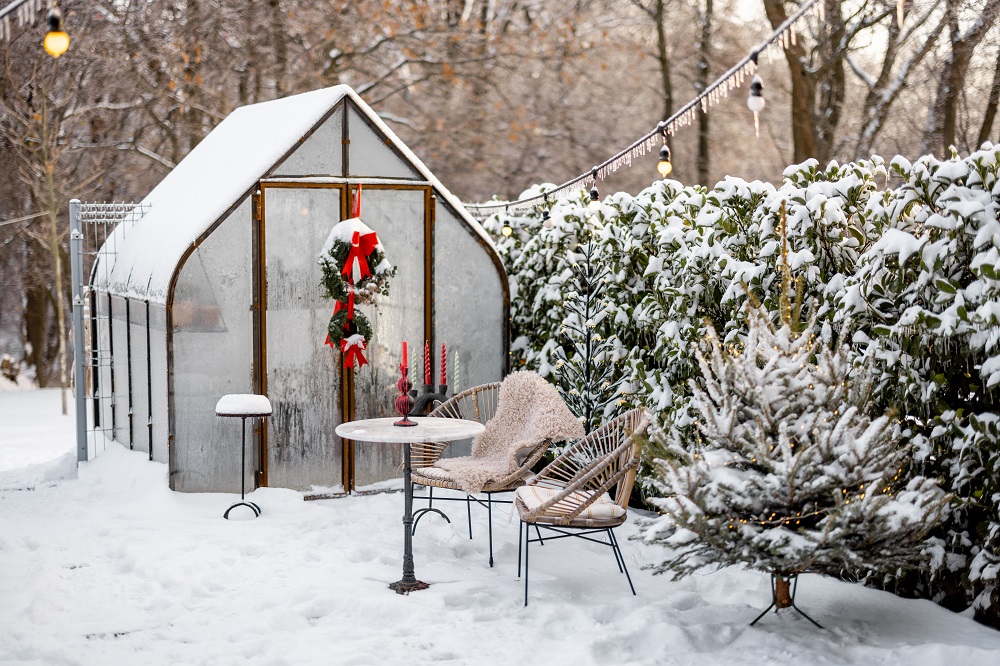
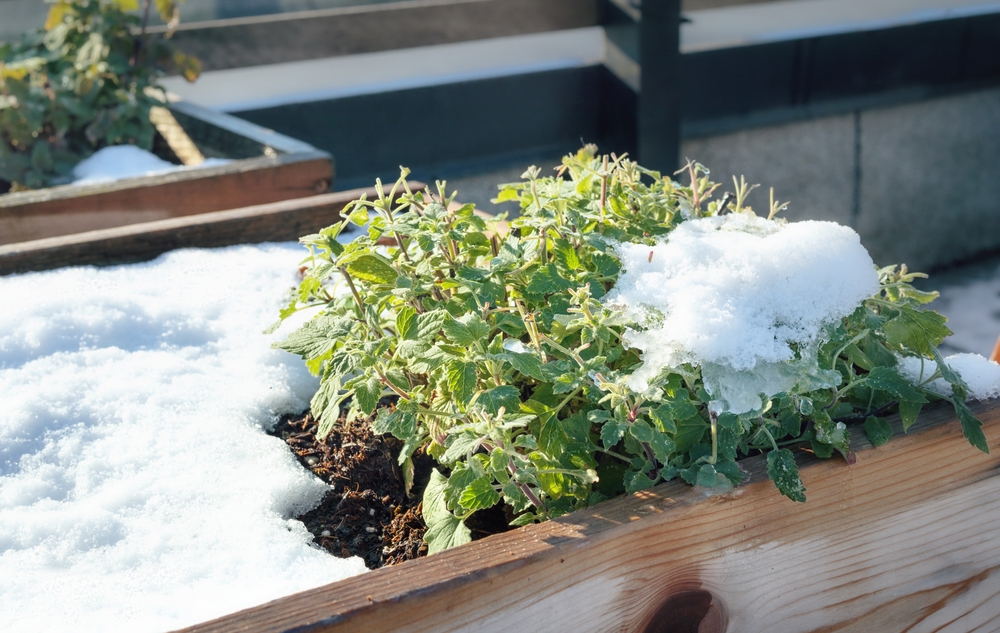
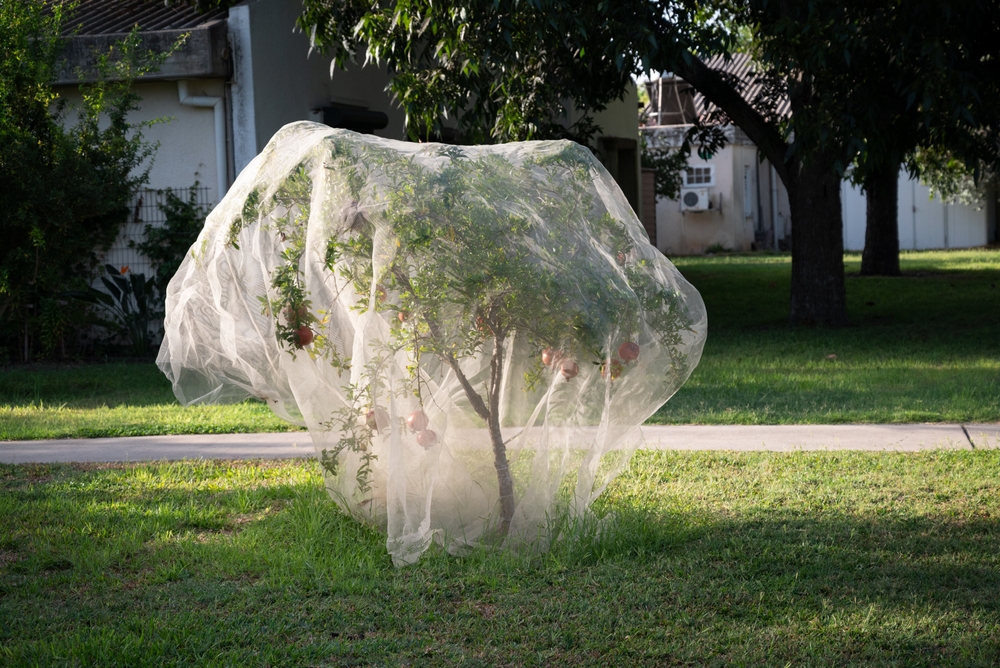
One Response
Good article. Here’s a tip for you if your hand ever gets covered with the thorns from an Opuntia Microdasys, as this happened to me when I was transplanting one and my hand was covered. I went outside to the lawn and ran my hand back and forth in the grass several times and every one of the thorns was completely removed!
I’ve had many different types of cacti and succulents over the years: rebutia, mammilaria, opuntia, euphorbia, cereus, with great success, but I have NEVER been able to keep a Lithops alive for more than two months. Do you have any tips for that one?